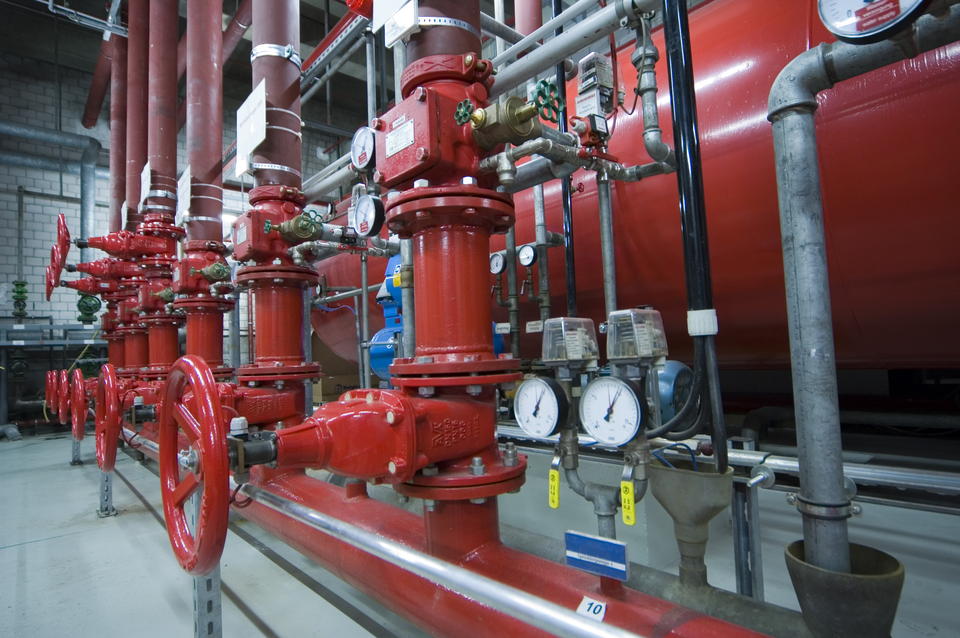Trusted Approaches for Fixing Low Water Pressure in Your Home
Trusted Approaches for Fixing Low Water Pressure in Your Home
Blog Article
What're your insights and beliefs about Dealing with Low Water Pressure in Your Home?

Low tide pressure in your home can be an aggravating issue, affecting whatever from showering to cleaning recipes. If you're experiencing weak water circulation, there are numerous possible reasons and options to discover. In this guide, we'll go over usual factors for low water stress and sensible steps to deal with the concern properly.
Introduction to Low Water Stress
Low tide stress happens when the circulation of water from your taps, showers, and other components is weak than typical. This can make day-to-day tasks much more challenging and much less effective. Understanding the reasons for low water stress is vital to discovering the ideal solution.
Usual Root Causes Of Low Water Stress
Faulty Stress Regulators
Stress regulatory authorities are in charge of maintaining regular water stress in your home. If they malfunction, it can result in low tide stress or uneven circulation throughout your home.
Local Water System Issues
Occasionally, the problem exists outside your home. Local supply of water concerns, such as main line leakages or upkeep job, can temporarily minimize water pressure in your area.
Pipe Obstructions
Over time, pipelines can end up being obstructed with natural resource, sediment, or debris, restricting the circulation of water. This is a common issue in older homes with galvanized steel pipelines.
Deterioration
Corrosion within pipelines can lead to leakages and lowered water stress. Rust build-up can constrict water circulation, specifically in aging plumbing systems.
How to Diagnose Low Tide Pressure
Evaluating Pipelines
Evaluate noticeable pipes for indicators of leakages, deterioration, or clogs. Take note of any type of unusual audios, such as knocking or rattling pipelines, which can indicate concerns within the plumbing system.
Consulting with a Plumber
If you're incapable to determine the root cause of low tide pressure, consider employing a specialist plumber to perform a detailed examination. They can determine underlying problems and suggest proper remedies.
Checking Taps and Components
Beginning by testing the water pressure at different faucets and components throughout your home. If the problem is separated to details areas, it might suggest local issues.
Do It Yourself Solutions to Deal With Low Water Stress
Flushing Water Heater
Sediment build-up in the water heater can restrict circulation and lower efficiency. Flushing the tank regularly helps eliminate sediment and preserve optimal performance.
Inspecting Stress Regulator
Ensure that the pressure regulator is operating appropriately. Adjusting or replacing the regulatory authority can help bring back appropriate water pressure throughout your home.
Cleaning Up Aerators and Showerheads
Natural resources can accumulate in aerators and showerheads, decreasing water flow. Get rid of and cleanse these parts consistently to boost water pressure.
Clearing Clogs in Pipes
For minor clogs, try making use of a plumbing serpent or chemical drain cleaner to clear blockages in pipes. Be cautious when making use of chemicals and comply with safety and security guidelines.
When to Call a Professional Plumber
If do it yourself initiatives stop working to settle the concern or if you think considerable plumbing troubles, it's ideal to look for aid from a qualified plumber. They have the competence and tools to attend to intricate concerns securely and properly.
Safety Nets to Maintain Water Stress
Mounting a Pressure Booster
Think about installing a stress booster pump to improve water stress in locations with regularly reduced flow. This can be especially valuable for multi-story homes or buildings with high-demand fixtures.
Tracking Water Usage
Bear in mind water use practices and stay clear of ill-using the plumbing system. Easy modifications, such as staggering showers and laundry loads, can help preserve ample water stress.
Routine Maintenance
Arrange routine upkeep for your plumbing system to stop problems such as rust, leaks, and clogs. Attending to minor issues early can help avoid more substantial fixings later on.
Verdict
Taking care of low water stress can be aggravating, but identifying the underlying reasons and implementing proper solutions can restore ideal flow throughout your home. Whether it's cleansing aerators, checking pipes, or consulting with a plumber, taking positive actions can ensure a consistent supply of water for your daily requirements.
FOUR WAYS TO FIX LOW WATER PRESSURE NOW
Turning on a shower or faucet only to find the water comes out in a sad, slow drizzle is never a good feeling. How exactly are you supposed to wash a pan or take a quick shower when it takes 10 minutes just to rinse off a little soap? The good news is that when your water pressure is bad, there's always a cause: typically one that can be easily fixed. Here are some of the most common causes of low pressure and what you can do to fix the issue:
DEBRIS AND MINERAL DEPOSIT BUILDUPS
If you notice low water pressure from just one or two of the fixtures in your house, the problem likely has to do with debris buildup. Water is full of minerals and other debris, all of which can accumulate in your pipes and on your fixtures. This can cause a blockage that affects how much water flows through. To fix this, try filling a small plastic bag with white vinegar, and use a rubber band to hang it around your showerhead or faucet. Let the head of the fixture soak for a few hours, and the vinegar should loosen the deposits.
WATER LEAKS
Leaks are another common cause of low water pressure. If water is flowing out of your plumbing through a hole or crack before it can reach your fixture, the pressure coming out of the faucet or showerhead will be lower. A plumbing professional is your best bet for finding and repairing a leak in your water supply pipes.
Leaks are another common cause of low water pressure. If water is flowing out of your plumbing through a hole or crack before it can reach your fixture, the pressure coming out of the faucet or showerhead will be lower. A plumbing professional is your best bet for finding and repairing a leak in your water supply pipes.
A VALVE ISSUE
If you have low water pressure throughout your home, check your main shut-off valve to make sure it's completely open. You may also want to see if there's a pressure-reducing valve installed. If there is, have a plumber help you adjust the settings to get the pressure you're looking for.
OTHERS USING WATER
Believe it or not, your low water pressure could be caused by your neighbors. If you notice low pressure at certain times of day, it may be because you and the people living next to you have similar schedules - when everyone is showering at the same time, the pressure will be lower in every home. Low pressure throughout the neighborhood may also be caused by an issue with your municipal water supply. If that's the case, call the supplier to see if they're working on the issue.
https://www.rotorooter.com/blog/water-leaking/low-water-pressure-fixes/

I hope you liked our article on Low Water Pressure in the House?. Thanks a lot for spending some time to browse our post. Loved our piece? Please share it. Help others discover it. Thanks a lot for being here. Please come by our site back soon.
Visit My Web Page Report this page